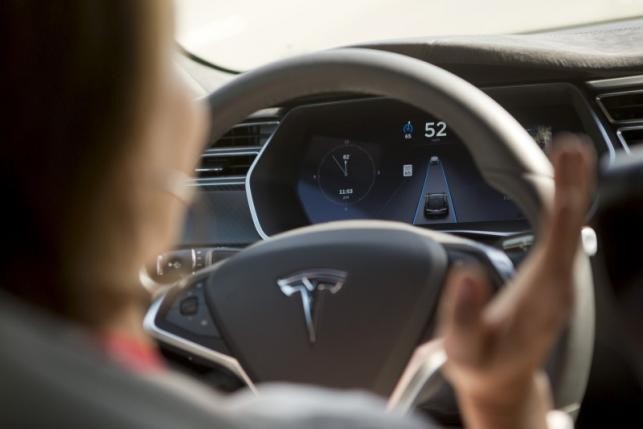Tesla's Model S software update adds an autopilot mode that turns it into a self-steering vehicle, automatically allowing the vehicle to stop lane drifting, change lanes, and parallel park. The electric vehicle (EV) now drives down highways with features like self-driving cars from Google, but does not allow the driver to lean back and take a cat nap while the automobile takes over like the fully-autonomous Herbie the Love Bug.
The auto-steering mode provides many features. It helps the driver to maintain the current speed, keep a safe distance from other vehicles, and stay in the same lane even around wide turns and bends.
If the green car starts to drift out of the current lane, the autopilot mode will make a loud beeping sound. However, more importantly it takes control of the steering wheel and centers the vehicle, according to Tech Crunch.
The Model S's new 7.0 software also allows the vehicle to automatically change lanes. After switching on the turn signal, the car will merge like magic to the left or right when a space opens up.
Tesla has cautioned owners of its e-cars that the new autopilot feature is only for highway driving now. One reason is that it is unable to recognize stop signs or traffic lights, according to Fast Company.
The EV company's new auto-steering tech processes data from four sources. They include sonar sensors, forward-facing radar, forward-facing camera, and GPS mapping.
Telsa's new semi self-driving mode also allows it to parallel park. It is done quickly and smoothly.
The new autopilot software upgrades work on any Model S and Model X built after September 2014. Customers will have to shell out a $2,500 fee.
Elon Musk has shared that he believes fully driverless cars will be launched in about three years. However, the autopilot mode is a big step in that direction.
Here's a hands-on of Tesla's Autopilot mode:



























